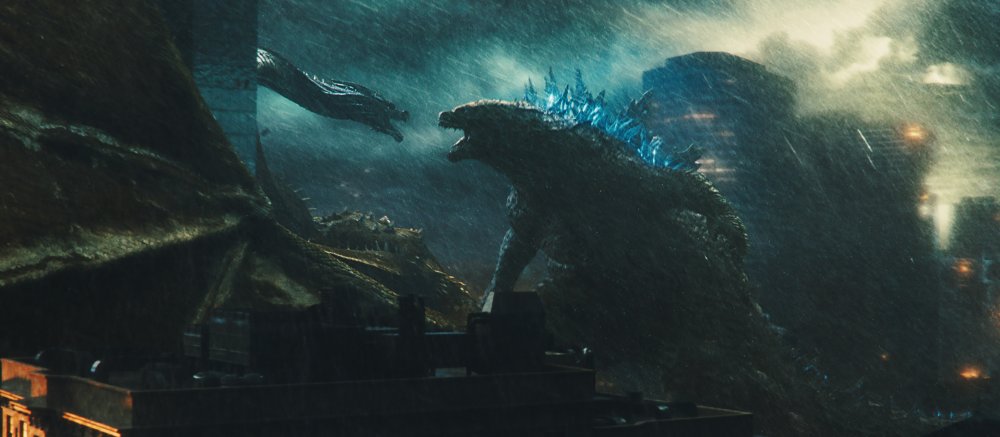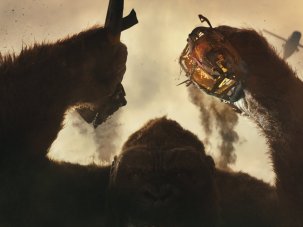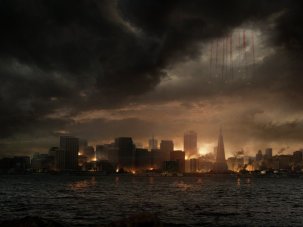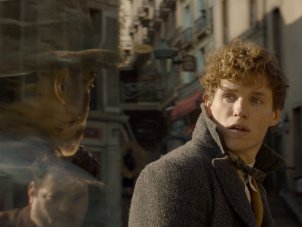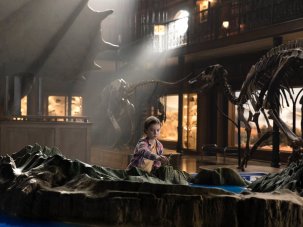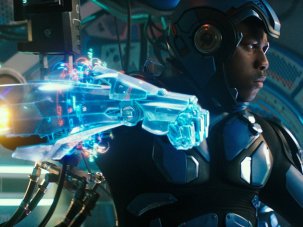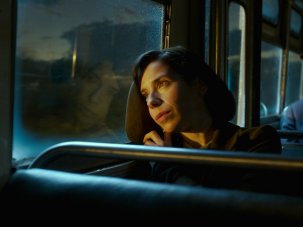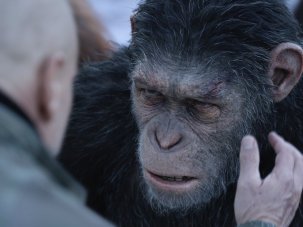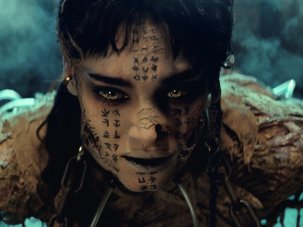The end credits sting of Gareth Edwards’s Godzilla (2014) teased the appearance of other iconic creatures from the bestiary that Toho Studios developed in its long-running monster series. These now duly make Hollywood screen debuts in a larger-scale followup that is still just a stepping stone for the next clash of titans, the forthcoming Godzilla vs Kong.
USA/Japan 2019
Certificate 12A 132mins approx
Director Michael Dougherty
Cast
Mark Russell Kyle Chandler
Dr Emma Russell Vera Farmiga
Madison Russell Millie Bobby Brown
Dr Ishiro Serizawa Ken Watanabes
Dr Ilene Chen and Dr Ling Ziyi Zhang
Dr Rick Stanton Bradley Whitford
Dr Vivienne Graham Sally Hawkins
Jonah Alan Chareles Dance
[2.39:1]
UK release date 29 May 2019
Distributor Warner Bros.
godzillamovietickets.co.uk
► Trailer
Though the original series developed organically rather than due to forward planning, the effect was similar to the extended film universe concept popularised by Marvel movies in the modern era. Rodan and Mothra were introduced in their own vehicles before being teamed with Toho’s A-lister Godzilla in ‘vs’ movies that expanded into overpopulated free-for-alls. The main monsters here were first brought together in Honda Ishiro’s Ghidorah, the Three-Headed Monster (1965), which followed the gradual process of reform whereby fearsome monsters transformed over sequels into merchandising-friendly pals to humanity. A chubbier, goofier Godzilla than the one which laid waste to Tokyo ten years earlier in Honda’s Godzilla (1954) was pitted against a three-headed dragon from outer space who would continue to play the role of bad guy in ever-more-elaborate bouts over the decades.
Given the fan (and general audience) rejection of Roland Emmerich’s Godzilla (1998), the ‘monsterverse’ titles (which include 2017’s Kong: Skull Island) have played safe with CGI creatures that are recognisable as versions of the established designs. This Godzilla has bulked up since 2014 – perhaps influenced by the look seen in Toho’s interesting and unusual Shin Godzilla (2016) – but boasts the distinctive features of the original. More effort seems to have been expended on the guest stars – Mothra, in particular, goes through several stages, importing folkloric magic elements into a science-fiction universe. There is a slightly laboured bit of business establishing that Dr Chen (Ziyi Zhang), a scientist at the monster-monitoring Monarch organisation, has a twin sister – something only viewers familiar with earlier Mothra movies, in which the feminine monster is psychically bonded to twin fairy princesses, will understand.
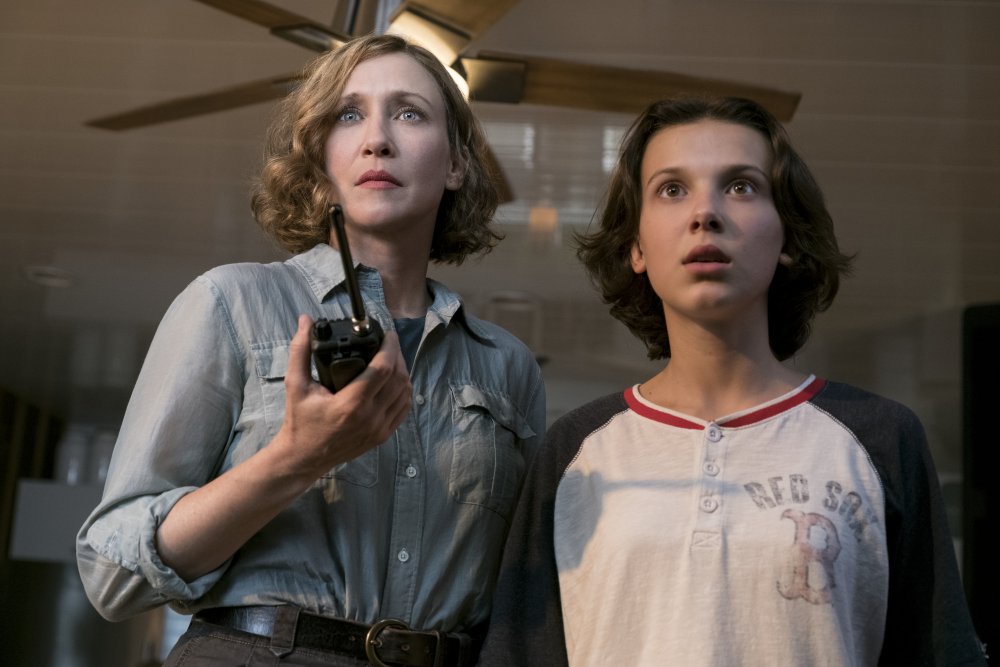
Vera Farmiga as Dr Emma Russell and Millie Bobby Brown as Madison Russell
A long-running problem of the series in all incarnations is finding a human story to tell between set-piece monster rampages. This brings back several characters from Godzilla, with Ken Watanabe adding gravitas and Sally Hawkins wondering why she bothered, and adds a new set of not-that-engaging people with their own problems and issues, who mostly act in utterly foolish ways to keep the plot spinning.
At some point, it seems a decision was made to beef up the role of Mark Russell – a top-billed Kyle Chandler – who feels like an import from the Jurassic Park saga, a divorced dad out to rescue his daughter (Stranger Things’ Millie Bobby Brown) and infuriated that his wife (Vera Farmiga) has reacted to the loss of their other child (presumably stamped on by Godzilla) by ceding dominance of the planet to giant monsters. It’s typical of the film to set up a major sequence in which flying monsters Mothra and Rodan dog-fight, only to cut that short and follow Mark as he struggles to open some airplane doors. This happens way too often for it not to be policy.
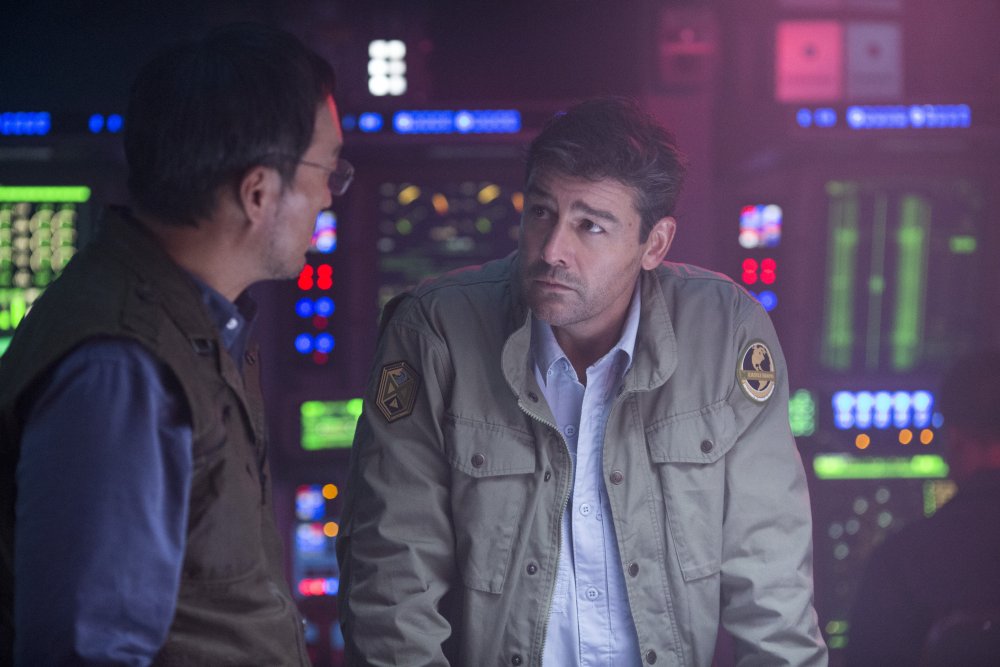
Ken Watanabe as Dr Ishiro Serizawa and Kyle Chandler as Mark Russell
Shin Godzilla seemed fresh because it told its giant monster story from an unusual viewpoint – the bureaucrats, politicians and accountants coping with and perhaps prospering from a Fukushima-like urban disaster – but this goes stale whenever Spielbergian soap opera takes over. It’s the sort of film that can discover and destroy Atlantis almost as a plot aside, then spend several scenes on a teenage girl stealing an insufficiently guarded super-gadget from comically inept villains and her feuding parents prompted by a throwaway remark (“Say that again”) to work out where she’s fled.
Nevertheless, when overqualified bit players stop spouting earnestly terrible dialogue, there are moments of monster magic: Rodan’s destructive flaming corkscrew flight mode, Mothra burning up and falling to Earth as reviving pixie dust, and Godzilla glowing like a walking blast furnace as he strides into battle.
-
The Digital Edition and Archive quick link
Log in here to your digital edition and archive subscription, take a look at the packages on offer and buy a subscription.




